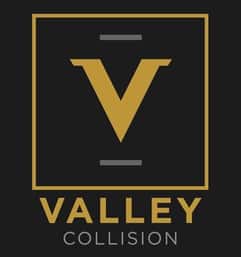It’s something that no one wants to think about, but collisions or fender benders are real hazards of being on the road that is smart to be prepared for.
Road incidents can happen in a split-second. A momentary lapse in judgement—your own or another drivers’—is all it takes to cause damage. Either right as you see it happening, or as you hit, adrenaline spikes and you make different decisions than normal.
We think we know what to do when an accident occurs, but in the midst of shock and chaos, our rationale can go out of the window, or we might simply miss a few important steps.
In these circumstances it’s quite easy to unintentionally put yourself, passengers, and other commuters at more risk. You can’t know how you’ll process it until you’re in the situation, which is why it’s a good idea to keep an accident checklist on hand in your dash. This can help you to quickly order your thinking and make sure you take the right actions in the unfortunate event of a collision.
Your Road Accident Checklist
- Stop the Vehicle. After any kind of collision, even a minor one, the first thing you need to do is find a safe place to bring the vehicle to a stop. It is a legal offence not to do so.
- Move to Safety. Once you’ve quickly assessed the situation, move the vehicle to a safe position. This is important to minimize the risks of pile-ups or further collisions as other commuters arrive at the accident site. If the vehicle is damaged to the extent that it cannot move, then exit when it is safe to do so, and relocate your passengers to a safe location out of any oncoming traffic, then alert law enforcement, and wait for their response.
- Check the Other Vehicle. You will also want to check the condition of the other vehicle and its occupants. Even if it’s only a minor collision where no one was injured, take the opportunity to document essential details in case a claim is made later on. Do not admit fault at this point as information you give at this point could potentially be used against you later, even if it was your fault.
- Notify the Police. Next make sure law enforcement is on their way to the site. This is especially vital if the accident caused obstruction on the road or someone is injured. You should also contact the police immediately if the other driver leaves the scene without providing their details, or if you suspect they are under the influence of alcohol or drugs.
- Make a Record and Take Pictures. Take note on your phone (or it’s also a good idea to keep a notepad and pencil in the console of your car):
- The make, model, color, and license plate of the other vehicle.
- Pictures of the accident scene, road layout and damage to both vehicles.
- The time, date, and any traffic or weather conditions that may have influenced the accident.
- Any injuries sustained by either party, the names, and contact details of any witnesses. This information will be vital later on in establishing a legal case.
- Exchange Contact and Insurance Information. It’s really important to share your name and address with the key person involved if the collision caused an injury, or damage to a vehicle, so they have a way of contacting you. Ask if the driver is the registered keeper of the vehicle, and swap insurance information with them.
- Call Your Insurance Company. Once the situation is under control, contact your insurance company so they are aware of the situation as soon as possible. Keep your insurance policy number on hand so you have a quick method of verification.
They will also want to know about the other driver, and who they are insured with. Be sure to let them know if you have suffered any injury as a result of the crash. - Seek Medical Attention. Depending on the situation, an ambulance may have been dispatched to the scene. If you have sustained some injury but can still manage to travel, your next call should be to see a doctor. They can verify any injuries, help with treatment, and also verify any significant injuries for insurance purposes.
- Keep a File. Include all the information and pictures you’ve collected, details of the other drivers, copies of police reports, and any medical notes. This makes sure it’s all in one place where you need it.
- Look for a Collision Specialist. If your car is in need of repair, find a good auto body shop to restore it to safe, working condition.
Accidents are an unfortunate reality of being a driver, but taking the time to make sure you’re really prepared can make all the difference and give you some peace of mind in a difficult situation.

